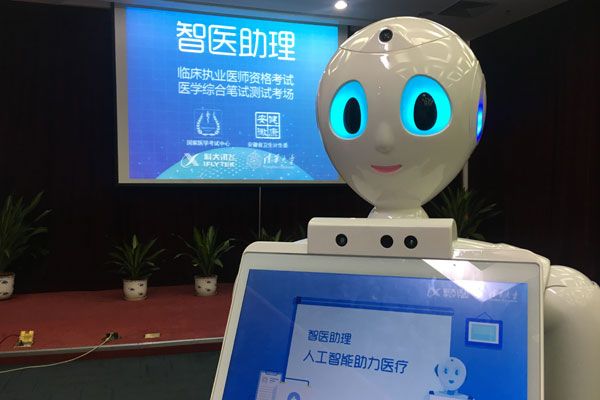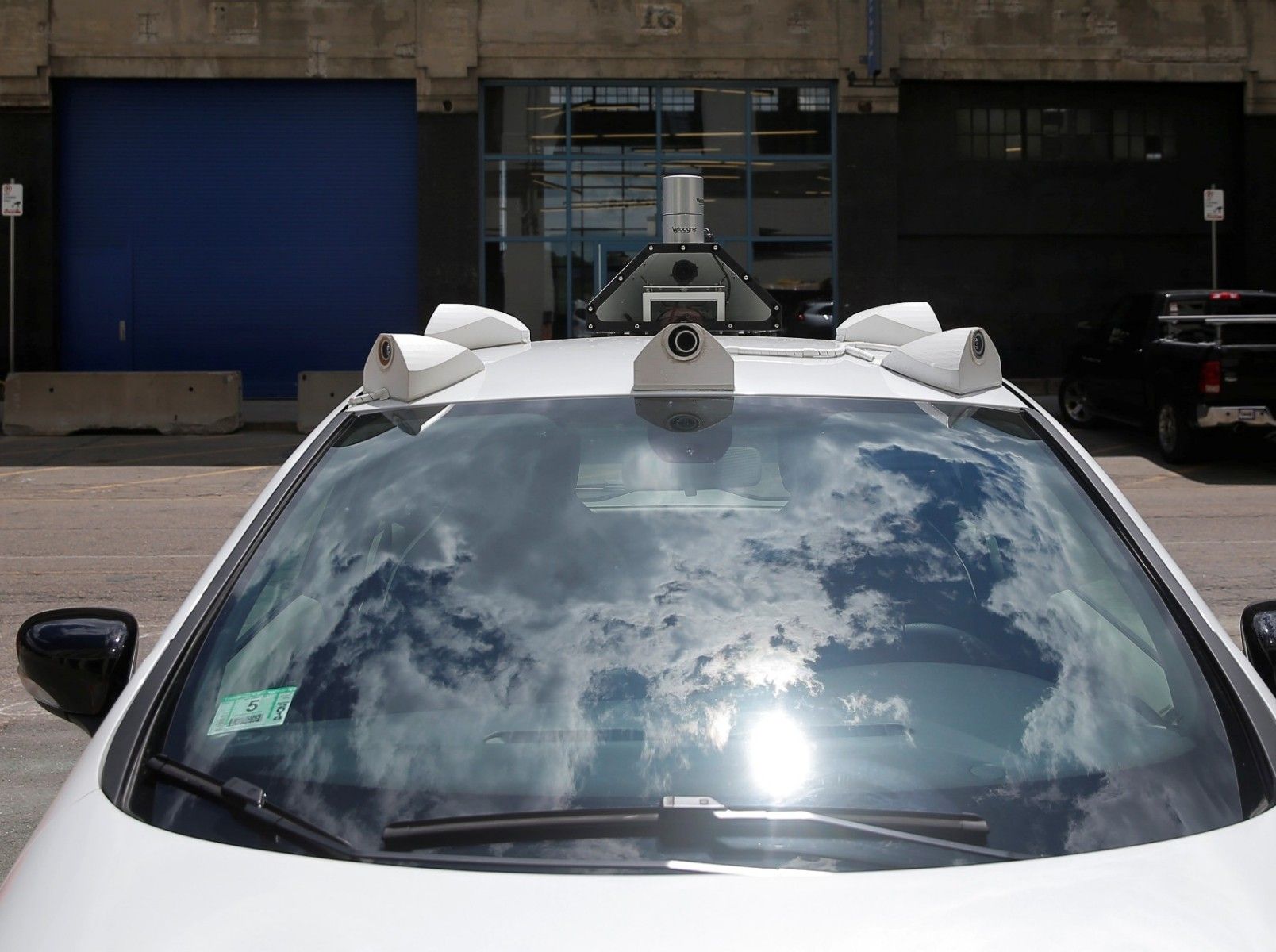A new survey is worrying the leader of DoD’s personnel and readiness office about how the military will recruit in the future.



“Increasingly, sophisticated and costly treatment are available to ever more limited and privileged segments of the population, and this raises questions about the sustainability of health care delivery and about what might be called a systemic tendency toward growing inequality in health care,” the pope said.
VATICAN CITY — Pope Francis on Thursday urged lawmakers to ensure that health care laws protect the “common good,” decrying the fact that in many places only the privileged can afford sophisticated medical treatments.
The comments came as U.S. lawmakers in Washington, D.C., have been debating how to overhaul the nation’s health insurance laws.
In a message to a medical association meeting at the Vatican, Francis expressed dismay at what he called a tendency toward growing inequality in health care. He said in wealthier countries, health care access risks being more dependent on people’s money than on their need for treatment.

Its developer iFlytek Co Ltd, a leading Chinese artificial intelligence company, said on Thursday that the robot scored 456 points, 96 points higher than the required marks.
The artificial-intelligence-enabled robot can automatically capture and analyze patient information and make initial diagnosis. It will be used to assist doctors to improve efficiency in future treatments, iFlytek said.
This is part of broader efforts by China to accelerate the application of AI in healthcare, consumer electronics, and other industries.

The first in a series of four advanced polar-orbiting satellites launched to space on its third try early Saturday (Nov. 18), turning its watchful eye to improving the accuracy of weather forecasts and Earth observations.
The new Joint Polar Satellite System-1 satellite, or JPSS-1, launched into orbit atop a United Launch Alliance-built Delta II rocket at 4:47 a.m. EST (0947 GMT), lighting up the predawn sky over its Vandenberg Air Force Base in California. The successful liftoff came after two scrubbed launch attempts earlier this week due to high winds and boats inside the launch range restriction zone offshore.
“Things went absolutely perfect today,” NASA launch manager Omar Baez said after the JPSS-1 launch. “The nation’s got another wonderful weather asset up in space.” [The JPSS-1 Weather Satellite’s Mission in Pictures].

Why do Silicon Valley technology executives send their children to an almost tech-free school? Several authors have explored this question, including New York University professor Adam Alter. In his book “Irresistible: The Rise of Addictive Technology and the Business of Keeping Us Hooked” Alter explores the case of a San Francisco Steiner-Waldorf school where 75% of students are the children of Silicon Valley tech execs. How ironic.
In this piece I propose some additional reasons why imaginative education is becoming an approach of choice for parents wanting their children to become innovative, ecologically aware and even, as Whitehead suggests, to develop genius.
The three factors of genius are the habit of action, the vivid imagination, and the discipline of judgment. Alfred North Whitehead, 1916.
When we offer children a lifeless, stale education, we not only destroy their vitality, but we dumb them down. Through industrial era excesses we have altered the biosphere to the extent that our planetary homeland may in the foreseeable future become inhospitable for human habitation. Climate crisis is recognised as a global geo-political issue. How can young people be expected to contend with such catastrophic futures? How can we turn around dead, stale thinking, awaken ecological thinking and bring education back to life?
Evolution of consciousness research tells us that 19th century mechanistic thinking is giving way to more life enhancing thinking. In the early 20th century Whitehead’s process philosophy, Einstein’s relativity and quantum physics turned Newton’s building block universe on its head. Is education keeping up?
A few well-known educational pioneers made significant contributions to overhauling the factory model of education and breathing life into it. The ideas of Maria Montessori in Italy, Rudolf Steiner in Germany, John Dewey in the USA and Sri Aurobindo in India are still alive today globally. But they have remained relatively marginalised. How can the best of these ideas be spread?
Several contemporary educational approaches can help to shift static concepts to living thinking. One of the most important is Kieran Egan’s imaginative education. I first met Kieran at the “Imagination and Education Conference” (2009) in Australia, after completing my PhD on evolution of consciousness and its importance for education. I became particularly interested in his five developmental stages of imaginative education: somatic, mythic, romantic, philosophic and ironic. It synergised wonderfully with Jean Gebser’s structures of consciousness: archaic, magical, mythic, mental and integral.
Australian advocate of imagination in education, Bernie Neville, compared Egan’s stages with both Gebser’s structures of consciousness and psychologist Robert Kegan’s orders of consciousness. I discuss this in detail in Postformal Education, in Chapter 9: “Pedagogical Life: A Sustaining Force.”
Other contemporary educators who believe imagination plays a crucial role in transforming education include Jack Miller from Toronto, Ron Miller from the United States and Thomas Nielsen from Australia.
Life and its metaphors are also emphasised in ecological, environmental and sustainability education. David Jardine talks about developing “ecological imagination” in young people. Similarly, ecopedagogy grew out of the First Earth Summit in Brazil in 1992 under the influence of Paulo Freire’s critical pedagogy. In addition to its home in Latin America, ecopedagogy is thriving in Bulgaria through the influence of young sociologist, Stefan Grigorov.
Futures studies and foresight education, with their links to sustainability and citizenship education, play a vital role in ecological awareness. They help develop a sense of responsibility for long-term futures of life on our planet, the survival of our companion species and life itself. Futures education with young people may involve workshops in which the young people imagine possible, alternative and desirable futures, before creating the action plans that empower them to create their preferred futures.
We can also encourage life-enhancing values and increase vitality through promoting pedagogical life in simple practical ways. We can ground children in nature through gardening, creative handwork, and following daily and seasonal cycles, rather than mechanical clock time. I share a couple of enlivening examples from the school I founded in the 1980s, when alternative energy was still a relatively new idea. With the help of a low-impact alternative energy expert from the local region, we designed and built a swing set that was like no other. When the children swung on the swings, once their kinetic energy built up to a certain degree, a light bulb installed in the frame of the swing set would light up. To the children, this was pure magic. And yet it was a magic that they had created with their own energy, while they were playing!
In a second project we built a large stone structure with a water wheel at the top and a series of sculpted clay-fired flow form basins through which water flowed down like a waterfall into a pond nestled into a sandpit beside a see-saw. When children rode the see-saw, the kinetic energy of their weight moving the see-saw up and down pumped water up, turning the water wheel and pouring water down through the flow forms. The children were empowered to experience their own kinetic energy transforming into another kind of energy—physics through imaginative play. Even these primary school children learnt important lessons in physics through their bodily kinetic activity, which they would only learn about conceptually in high school, when they studied physics.
Finally, creative school architecture is an increasingly popular way to stimulate children’s creativity and imagination – to help them to think outside the square. Creative school architecture is iconic to Steiner-Waldorf schooling, but more recently has become a benchmark for top international schools in Scandinavia, Japan and elsewhere. See below the colourful kindergarten in Tromso, Norway.
To read more about Jennifer’s idea on Imaginative Education:
The ideas in this blog are expanded and discussed in: Postformal Education: A Philosophy for Complex Futures (Springer, 2016).
An earlier version of this article was published on ImaginEd: Education that Inspires.
And with an apparently adequate battery too! None of the power lines are visible anymore!
Welcome to the NINJA-singularity!
So wax on.
Then wax off! wink
A new disaster robot has amazing human-like capabilities.

Nathan Treff was diagnosed with type 1 diabetes at 24. It’s a disease that runs in families, but it has complex causes. More than one gene is involved. And the environment plays a role too.
So you don’t know who will get it. Treff’s grandfather had it, and lost a leg. But Treff’s three young kids are fine, so far. He’s crossing his fingers they won’t develop it later.
Now Treff, an in vitro fertilization specialist, is working on a radical way to change the odds. Using a combination of computer models and DNA tests, the startup company he’s working with, Genomic Prediction, thinks it has a way of predicting which IVF embryos in a laboratory dish would be most likely to develop type 1 diabetes or other complex diseases. Armed with such statistical scorecards, doctors and parents could huddle and choose to avoid embryos with failing grades.

Putting autonomous vehicles on the road when they perform just better than human drivers could save hundreds of thousands of lives over time. This article explains: r.rand.org/5y4v

Researchers at Columbia University have successfully created the world’s first computer chip powered by an isolated chemical biological process. Natural systems emit enormous amounts of energy that is often underutilized. This new bio-chip represents a high-tech version of “working with nature” and is producing promising results in the laboratory.